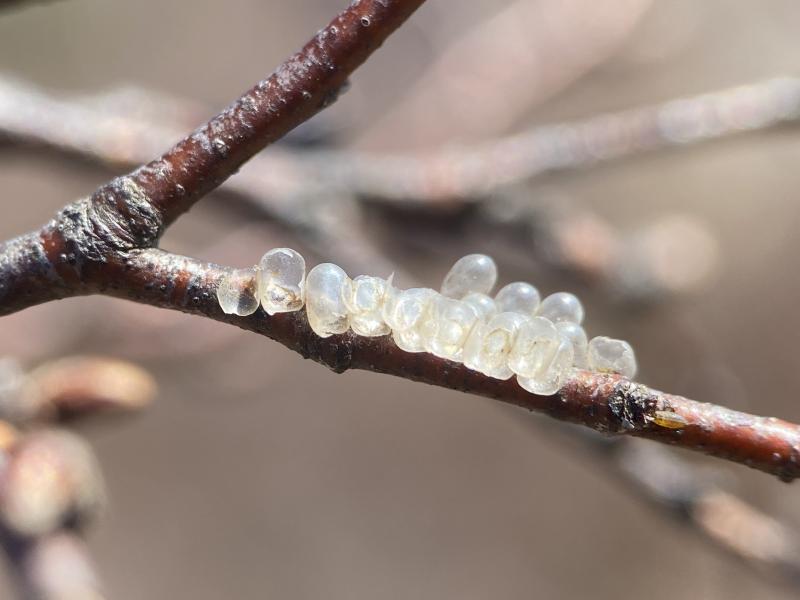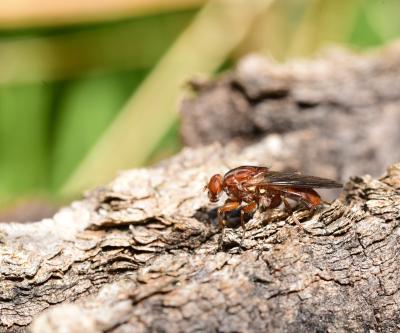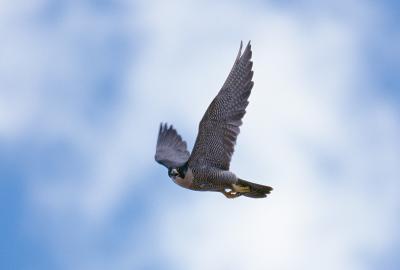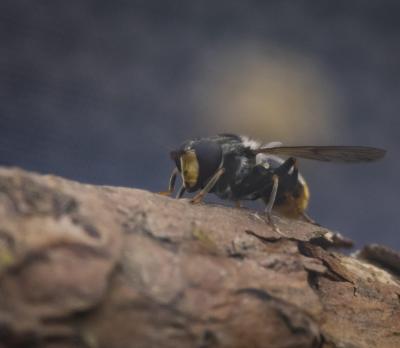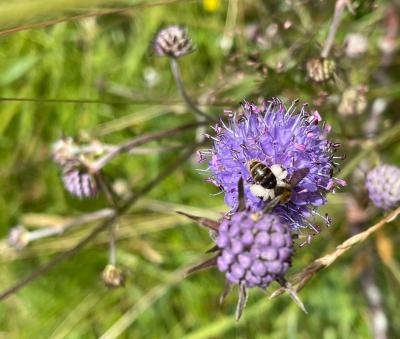Kentish glory
Endromis versicolora

Despite its name, the last records of the Kentish glory in England are from around 1970. Now, this rare and unique moth lives exclusively in two places in the highlands of Scotland, one of which is the Cairngorms National Park.
Factsheet
Lifespan: 1 to 2 years from egg to adult
Best time to spot: Mid-April to mid-May as a moth; May to September as a caterpillar
With its brown and white dappled wings, furry head and comb-like feathery antennae, there’s no mistaking this large and striking moth for any other. They are day flyers, whereas most moths come out at night.
Females are around 25% larger than males, and have a wingspan of 34-39mm. The male wingspan is 27-30mm, and their hindwings are more orangey in colour than those of the females.
The caterpillars can be found from mid-May to mid-August before overwintering as pupae in a webbed cocoon on the ground. The pupa stage is when an insect develops from being a larva (caterpillar) into an adult moth. During this time, it is contained in and protected by a hard covering and does not move.
Mating happens during the short flight season, from mid-April to around the third week of May. Like several other moth species, the Kentish glory doesn’t eat once it emerges as an adult, so the clock is ticking the moment it transforms into a moth.
On calm, warm days, males will fly from mid-morning to mid-afternoon, then again at dusk. Females tend to fly only during the night.
Did you know?
Despite its name, the last records of the Kentish glory in England are from around 1970. Now, this rare and unique moth lives exclusively in two places in the highlands of Scotland, one of which is the Cairngorms National Park.
Factsheet
Lifespan: 1 to 2 years from egg to adult
Best time to spot: Mid-April to mid-May as a moth; May to September as a caterpillar
With its brown and white dappled wings, furry head and comb-like feathery antennae, there’s no mistaking this large and striking moth for any other. They are day flyers, whereas most moths come out at night.
Females are around 25% larger than males, and have a wingspan of 34-39mm. The male wingspan is 27-30mm, and their hindwings are more orangey in colour than those of the females.
The caterpillars can be found from mid-May to mid-August before overwintering as pupae in a webbed cocoon on the ground. The pupa stage is when an insect develops from being a larva (caterpillar) into an adult moth. During this time, it is contained in and protected by a hard covering and does not move.
Mating happens during the short flight season, from mid-April to around the third week of May. Like several other moth species, the Kentish glory doesn’t eat once it emerges as an adult, so the clock is ticking the moment it transforms into a moth.
On calm, warm days, males will fly from mid-morning to mid-afternoon, then again at dusk. Females tend to fly only during the night.
Did you know?
During the mating period, the females prefer to sit on branches pretending to be dead leaves while releasing pheromones to share the news that they are looking for a mate. Males fly quickly over their habitat, using their antennae to search for a female partner.
The female lays 10-20 eggs on the tips of regenerating silver birch trees. A study of Kentish glory eggs in Strathspey in 2019 found that they are laid at an average height of 68cm up the tree, which is lower than previous studies had suggested.
This trait is one of the reasons this species’ spread has diminished over time. The loss and fragmentation of birch woodland - silver birch in particular - is one of the biggest threats to its survival. The larvae depend on the silver birch’s leaves for food, preferring open birch woodland and lightly wooded moorland. Areas of birch tree growth in which the trees have matured and become more tightly packed don’t offer a good long-term home for this species.
Luckily, the National Park provides a good habitat with ample birch regeneration, as has been proved by conservation work that’s ongoing to protect this beautiful moth. Using pheromones to attract them for monitoring has proved successful, helping experts measure their spread and identify breeding sites containing eggs and caterpillars. This is a tricky, time-consuming task!
By finding out where these moths breed, conservationists can work on ensuring there is enough young silver birch growth nearby to support an ongoing population.
The Rare Invertebrates in the Cairngorms (RIC) is a partnership project working to reverse the fortunes of the aspen hoverfly, along with several other rare insects in the Cairngorms. To find out more about the project’s work and get involved, visit: https://rare-inverts-rspb.hub.arcgis.com






